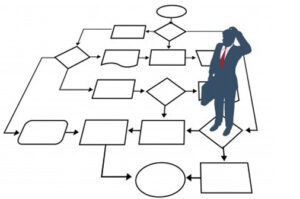What Makes Integration Difficult?
For organizations looking to integrate applications on ever-more-complex environments, often as cloud, on-premises and hybrids, integration has become an essential IT component, and a preferred method to keep applications connected everywhere.
The major analyst firms are predicting a great future for middleware.
Gartner forecasts that middleware software will account for potential growth rate of IT expenditure year by year. Integration costs have been a significant overhead in large IT projects for some time, but costs only includes the software, not the internal IT effort of making it work. That being said integration solutions already accounts for 30% to 40% of the total project cost, and often as much as 70%. What Makes Integration Difficult?
Choosing The Right Integration Product
Primary difficulty is choosing a right product for integration needs and it is also essential to choose between Proprietary or Open Source tools for that matter.
Proprietary software provides all possible features and strong support. However, there is also higher costs and a perceived higher complexity in usage and maintenance. Where as open source middleware products are less costly as low as 10% of Proprietary Software, ease of use and flexible.
All most all Proprietary Integrations provide similar features and solutions, and also the most of the leading open source products offer similar capabilities and limitations. Comparing different ESB products.
Therefore, it is advisable to pre-define your own needs, and then to evaluate the product which suite best for your needs.
| Criteria | Proprietary | Open Source | Winner |
| Ease of use | Very complex installation (Product expert consultants needed) | One Click Installer | Open Source |
| Monitoring | Inbuilt into the product (e.g. for administration and monitoring), Analysis of source code not necessary, refactoring via GUI | Third Party tools needed (e.g. for administration and monitoring), Analysis of source code necessary, refactoring via GUI | Proprietary |
| Community | Buy support, forums, Product experts blogs. | Based on open source projects, plus own community, implementation experts. | Open Source |
| Support | 24/7 enterprise support, SLAs as you wish, deployments with thousands of servers | 24/7 enterprise support, less guarantees than proprietary support, check for local consulting and support | Proprietary |
| Features | All Integration features and many more (BPEL, BAM, CEP, EDA, etc., etc., etc.) | All Integration features and some more | Proprietary |
| Flexibility | (Make a change request and wait is long; Not free) OR (Pay to get dedicated support) | Open source, change what you want | Open Source |
| Custom Solutions | Do it yourself Or Pay | Standards-based, lack of standards | Both |
| Adapters and Connectors | Connectors and Adapters available for all most all for technologies and business applications | Connectors and Adapters available for all most all for technologies and business applications | Both |
| Costs | MUCH Expensive | LESS Expensive | Open Source |
| Licensing | Complex price list, pay for upgrades, migrations. | Subscription model, upgrades are inclusive, predictive costs, downgrades possible | Open Source |
Architecture

Architecting integration solutions for project is a complex task. There are many conflicting drivers and even more possible and proven solutions. Many times the architecture phase takes more time and include current and future needs for businesses and inevitable changes and additions put the original architecture at challenge. Most integration vendors provide methodologies and best practices, but these instructions cost you more and typically drive you towards the vendor-provided tool sets and often require extra efforts to create a custom solution as patches.
Enterprise Integration Patterns
A pattern makes a solution reusable due to its independence from a specific implementation. As a result of using design patterns, software developers might have a common understanding of a problem and this leads to an effective way for easier communication.
The “patterns” are not copy-paste code samples or shrink-wrap components, but rather nuggets of advice that describe solutions to frequently recurring problems. Used properly, the integration patterns can help fill the wide gap between the high-level vision of integration and the actual system implementation.
At last, If you are looking for consultants and systems integration experts who understands all these with a strong play in a variety of Integrations products, Genysoft is to consider for all your needs of middleware.
We are integration experts from Offshore Hyderabad, India and have been working with large scale integration projects since 2008. We have vast experience working on multiple middleware integration products, which is a very unique combination of skills that we proud of. Be it is On-premise or Cloud, Proprietary or Open source, Frameworks or Integration Suites we have expertise.
Our integration engineers have experience in various integration products such as Oracle SOA, WSO2, Mulesoft and we are active contributors to the community where we learn and share the experiences. We recognize that each customer integration project is unique and we understand your integration puzzles and we apply our expertise to solve them. Our delivery methodology ensures scalable, cost effective integration solutions to your problems.
We’ve gathered our knowledge over decade; a knowledge that we are happy to now place at your service. Please Write to Us your needs of middleware.
